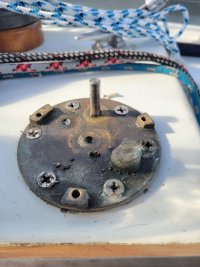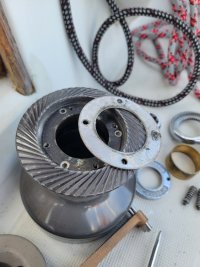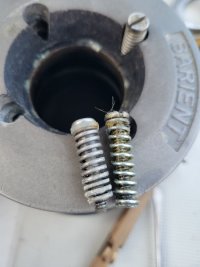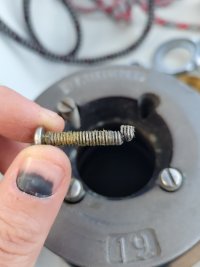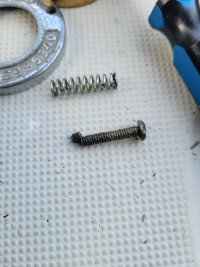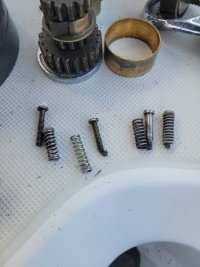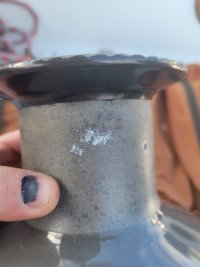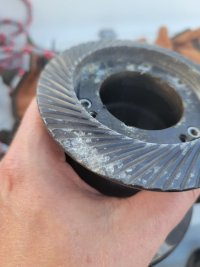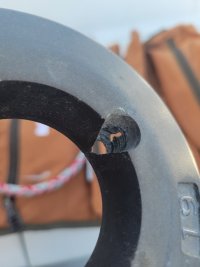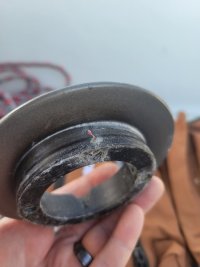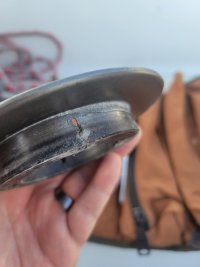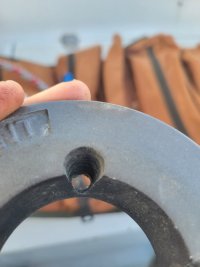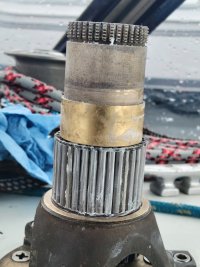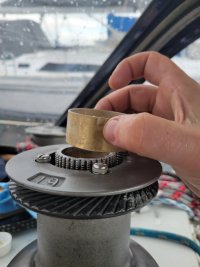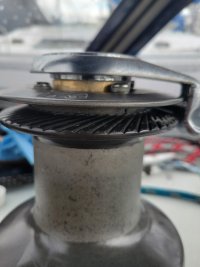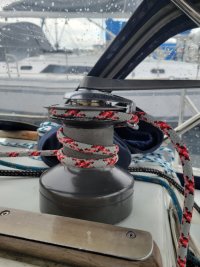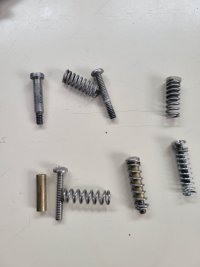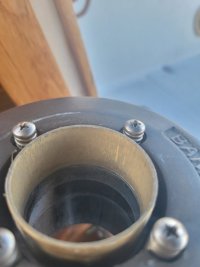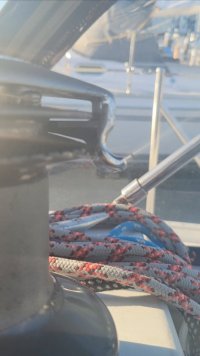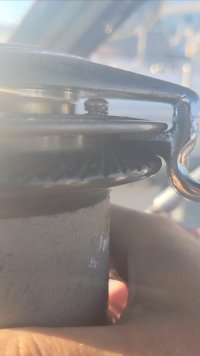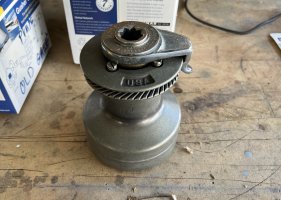Older self-tailing winches often seem to lose their hold on the line, resulting in a return to the two-handed approach.
Thanks to a Barient diagram provided by Bruce Gary in this thread, I was able to remove a spacer and return the jaws to a useful grip on the line.
This is a Barient 23, and I don't know that all Barients have a spacer plate that allows adjustment. It's also possible that some ST winch jaws just won't work well with modern small-diameter line, or line that is very stiff, as Dyneema can be.
The spacer plate is located under the jaws.
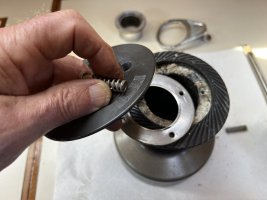 x
x
It comes out easily, and doesn't require disassembly of the gears.
Many of us have noticed the inaccuracy of Barient exploded diagrams, in which the model number of the winch in hand simply doesn't match the manual so denoted. Even so, it may be worthwhile to examine a non-grasping ST winch, on the odds that it contains a spacer plate expressly designed for smaller diameter lines.
Video sequence, Spring 2024:
Indexed as a Thelonious Blog entry.
Thanks to a Barient diagram provided by Bruce Gary in this thread, I was able to remove a spacer and return the jaws to a useful grip on the line.
This is a Barient 23, and I don't know that all Barients have a spacer plate that allows adjustment. It's also possible that some ST winch jaws just won't work well with modern small-diameter line, or line that is very stiff, as Dyneema can be.
The spacer plate is located under the jaws.
 x
xIt comes out easily, and doesn't require disassembly of the gears.
Many of us have noticed the inaccuracy of Barient exploded diagrams, in which the model number of the winch in hand simply doesn't match the manual so denoted. Even so, it may be worthwhile to examine a non-grasping ST winch, on the odds that it contains a spacer plate expressly designed for smaller diameter lines.
Video sequence, Spring 2024:
Indexed as a Thelonious Blog entry.


